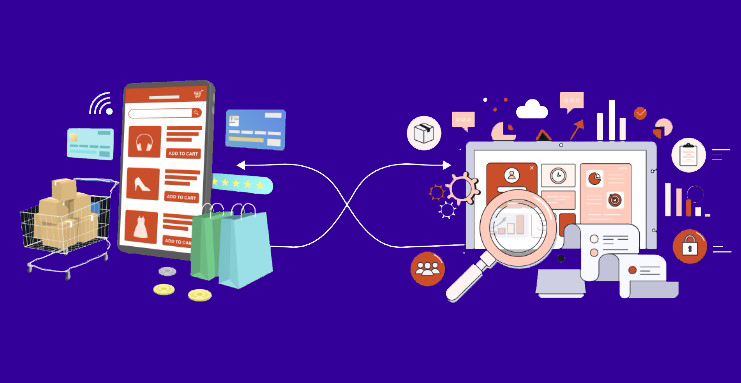Streamlining Success: The Impact of ERP Systems on Ecommerce
In the bustling world of ecommerce, businesses face the constant challenge of managing operations efficiently while keeping up with customer demands and market dynamics. To thrive in this environment, many companies are turning to Enterprise Resource Planning (ERP) systems. ERP systems offer a comprehensive solution by integrating various business processes into a unified system. This article explores the pivotal role of ERP systems in ecommerce, detailing their features, benefits, and implementation strategies.
Understanding ERP in Ecommerce
ERP systems are designed to centralize and streamline key business processes, providing real-time visibility and control over operations. For ecommerce businesses, this includes managing inventory, order processing, customer relationships, financials, and supply chain logistics. By consolidating these functions into a single platform, ERP systems enhance efficiency, reduce errors, and support better decision-making.
Key Features of ERP Systems for Ecommerce
- Inventory Management: Effective inventory management is critical in ecommerce. ERP systems offer real-time tracking of inventory levels, automated reordering, and detailed reporting. This helps businesses maintain optimal stock levels, prevent stockouts, and reduce excess inventory.
- Order Processing: ERP systems streamline order processing by automating tasks such as order entry, payment processing, and fulfillment. This reduces manual errors, accelerates order processing times, and improves customer satisfaction.
- Customer Relationship Management (CRM): CRM modules within ERP systems manage customer data, track purchase histories, and analyze customer behavior. This enables personalized marketing, better customer service, and the building of long-term customer loyalty.
- Financial Management: ERP systems provide robust financial management tools, including general ledger, accounts payable and receivable, budgeting, and financial reporting. These tools offer real-time financial insights, ensuring accurate financial records and regulatory compliance.
- Supply Chain Management: Effective supply chain management is essential for timely product delivery. ERP systems manage procurement, supplier relationships, and logistics, optimizing the supply chain and reducing lead times.
- Reporting and Analytics: Advanced reporting and analytics tools provide valuable insights into business performance. Ecommerce businesses can monitor key performance indicators (KPIs), identify trends, and make data-driven decisions using these tools.
- Integration Capabilities: ERP systems integrate seamlessly with ecommerce platforms, payment gateways, and third-party applications. This ensures smooth data flow and a unified IT environment.
Benefits of Implementing ERP Systems in Ecommerce
- Improved Efficiency and Productivity: By automating routine tasks and integrating various business processes, ERP systems enhance operational efficiency and productivity, allowing businesses to focus on strategic growth.
- Enhanced Data Accuracy and Accessibility: Centralizing data ensures that all stakeholders have access to accurate, up-to-date information, improving data consistency and facilitating better decision-making.
- Better Inventory Control: Real-time visibility into inventory levels and automated reordering help maintain optimal inventory, reduce carrying costs, and prevent stockouts.
- Streamlined Order Fulfillment: Automated order processing reduces errors and speeds up order fulfillment, leading to faster delivery times and improved customer satisfaction.
- Scalability and Flexibility: ERP systems are scalable and flexible, allowing businesses to add new modules and functionalities as they grow, ensuring the system adapts to changing needs.
- Enhanced Customer Experience: By providing a unified view of customer data and enabling personalized interactions, ERP systems help deliver superior customer experiences, leading to higher satisfaction and loyalty.
- Cost Savings: ERP systems identify inefficiencies and cost-saving opportunities by optimizing resource utilization, reducing operational costs, and improving inventory management.
- Regulatory Compliance: ERP systems provide tools for accurate financial reporting, tax calculations, and audit trails, ensuring compliance with regulatory requirements and industry standards.
Implementing ERP Systems in Ecommerce
Successful ERP implementation requires careful planning and execution. Here are the key steps involved:
- Needs Assessment: Conduct a thorough assessment of your ecommerce operations to identify areas where an ERP system can add value. This will help select the right features and modules.
- Vendor Selection: Choose an ERP vendor with a strong track record in ecommerce. Consider factors like functionality, scalability, integration capabilities, and vendor support.
- Project Planning: Develop a detailed implementation plan with timelines, milestones, and resource allocation. Assign a project manager to oversee the process and ensure alignment among stakeholders.
- Data Migration: Plan and execute the migration of existing data to the new ERP system. Ensure data accuracy and completeness to avoid issues during the transition, with data cleansing and mapping being crucial steps.
- Customization and Configuration: Customize and configure the ERP system to fit your unique ecommerce processes, including setting up specific workflows, user roles, and permissions.
- Training and Change Management: Provide comprehensive training to employees on using the new ERP system. Effective change management strategies ensure employee buy-in and minimize resistance. Communicate the benefits and offer ongoing support.
- Testing and Go-Live: Conduct thorough testing to identify and resolve issues, including system integration testing, user acceptance testing, and performance testing. Monitor the system closely during the initial phase after going live.
- Post-Implementation Support: Provide ongoing support and maintenance to ensure smooth operation, including regular updates, troubleshooting, and user support. Continually assess system performance and make necessary adjustments.
Real-World Examples of ERP in Ecommerce
- Amazon: Amazon uses sophisticated ERP systems to manage its vast inventory, streamline order processing, and optimize its supply chain. The ERP system provides real-time visibility into operations, helping maintain high efficiency and customer satisfaction.
- Zappos: Zappos, an online shoe and clothing retailer, implemented an ERP system to improve inventory management and order fulfillment. The system enabled Zappos to reduce order processing times, maintain accurate inventory levels, and enhance customer experience.
- Warby Parker: Warby Parker, an online eyewear retailer, uses an ERP system to integrate ecommerce operations with physical stores. The ERP system provides a unified view of inventory and customer data, enabling a seamless omnichannel experience.
Conclusion
ERP systems are essential for ecommerce businesses aiming to streamline operations, enhance efficiency, and deliver superior customer experiences. By integrating core business processes, providing real-time insights, and automating routine tasks, ERP systems enable ecommerce companies to operate more effectively and stay competitive in a rapidly evolving market.
Investing in an ERP system is not just about adopting new technology; it’s about transforming your business into a more agile, responsive, and efficient operation. As the ecommerce landscape continues to evolve, leveraging the power of advanced ERP solutions will lead to innovation and success.
By carefully selecting the right ERP system and planning a strategic implementation, ecommerce businesses can unlock their full potential, achieve significant cost savings, and position themselves for long-term growth. Whether you’re a small online retailer or a large ecommerce platform, an ERP system provides the tools and insights needed to thrive in today’s competitive market.




